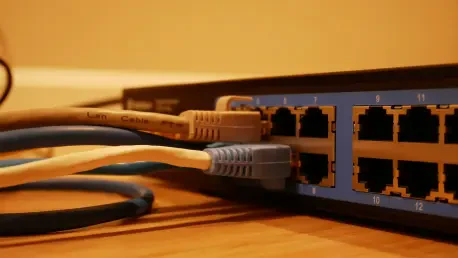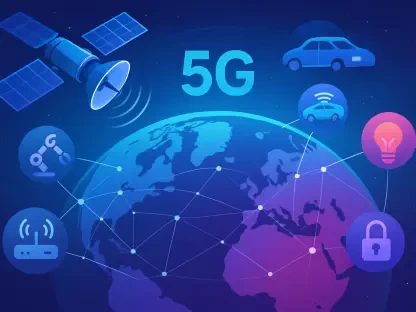As artificial intelligence continues to transform industries across the globe, Asian economies strive to harness its full potential. However, a key challenge remains. Limitations in current network infrastructure could stifle these ambitions, posing a serious hurdle to successful AI implementation in the Asia-Pacific region. An in-depth report from IDC titled “Enterprise Horizons 2025: Technology Leaders Priorities: Achieving Digital Agility” sheds light on this issue. The report underscores the critical nature of robust connectivity as 43% of APAC organizations prioritize networking and connectivity for their future investments. An overwhelming 94% of these companies lament that their networks restrict their ability to undertake substantial AI projects. This stark reality highlights the gap between ambitious aspirations and the network capabilities needed to realize them.
The Growing Imperative for Network Modernization
Prioritizing Connectivity and Investment
The growing recognition of network modernization as a priority reflects an urgent need for enhanced connectivity in AI adoption. As organizations across Asia-Pacific seek to unleash the transformative power of AI, investment in next-generation networks has emerged as a financial commitment. Companies in the region are acutely aware that outdated infrastructure can impede AI’s disruptive potential. Consequently, 43% of businesses plan to bolster investments in networking, highlighting a decisive move to address infrastructural bottlenecks that limit AI endeavors. This trend aligns with a broader realization that seamless connectivity is crucial for unlocking AI’s advanced capabilities and ensuring optimal performance in data-intensive tasks.
Moreover, the complexity and scarcity of talent required to manage sophisticated networks drive many enterprises to seek external solutions. Managed service providers have become increasingly popular, offering a viable strategy to navigate technological challenges. As more organizations turn to these services, the emphasis is on balancing innovation with sustainability. By investing in modern networking solutions, organizations not only aim to overcome existing limitations but also enhance productivity and operational efficiency. The evolution toward cutting-edge networks is indicative of a strategy to mitigate financial losses caused by obsolete infrastructures, a burden experienced by approximately half of the surveyed companies.
Economic Implications and AI Projects
Financial repercussions from outdated networks have prompted many enterprises to reconsider their strategic directions. A significant number of organizations report financial losses due to inadequate infrastructure, further emphasizing the urgency of network modernization. As AI-driven processes demand higher speed, reliability, and data handling capacity, the inadequacies of current networks become more pronounced. Businesses feel the pressure as these limitations directly impact their bottom line, necessitating a re-evaluation of priorities in favor of enhanced connectivity solutions. The capacity to successfully execute large-scale AI projects hinges on eliminating network constraints that throttle project feasibility and potential returns.
The economic implications extend beyond immediate financial losses, influencing competitive positioning within the AI-centric marketplace. Companies unable to implement robust AI solutions risk falling behind as faster, more efficient networks enable industry peers to gain a strategic advantage. Consequently, the call for modernizing network infrastructure is not just about managing costs, but crucially about maintaining and enhancing competitive leverage. As Asia-Pacific positions itself as a leader in AI, addressing network shortcomings presents itself as an unavoidable priority to fostering innovation and growth in an increasingly AI-driven economy.
Strategies for Sustainable Network Solutions
Environmental Benefits of Modernization
The move toward next-generation networks also aligns well with the region’s growing focus on sustainability. Modernizing infrastructures offers more than just advanced capabilities; it paves the way for increased energy efficiency and reduced carbon emissions. As global awareness of environmental impacts rises, businesses find modernization efforts resonate with both economic and ecological objectives. By enhancing energy efficiency, enterprises can reduce their carbon footprints, aligning business operations with initiatives that promote sustainable development.
The combination of AI’s potential and environmentally responsible practices suggests a synergy that benefits broader strategic goals. As companies transition to greener technologies, the appeal of sustainable advancements becomes apparent. This dual benefit of technological progress and environmental stewardship resonates with stakeholders invested in corporate responsibility. Furthermore, the drive for sustainability is propelled by the urgency to address climate change challenges, evident in policy shifts and consumer preferences. By modernizing networks, companies position themselves not only as technological leaders but also as proponents of sustainable practices in a competitive landscape.
Ensuring Competitiveness in AI Economy
As AI grows in importance, network modernization has become crucial for boosting connectivity. In the Asia-Pacific region, businesses eager to harness AI’s power are committing financially to next-gen networks. These companies realize outdated systems can block AI’s disruptive potential, with 43% planning increased networking investments to tackle infrastructural hurdles hindering AI pursuits. The move emphasizes the need for seamless connections to unlock AI capabilities and excel in data-heavy tasks.
Compounding the challenge is the limited pool of skilled professionals needed to manage complex networks. This scarcity drives many businesses to turn to managed service providers, seen as a strategic response to technological hurdles. As organizations increasingly adopt these services, they focus on balancing innovation with sustainability. By adopting modern networking solutions, they aim to overcome current hurdles while boosting productivity and efficiency. Advancing toward cutting-edge networks indicates a deliberate strategy to minimize financial losses due to outdated infrastructure, affecting about half of surveyed companies.









